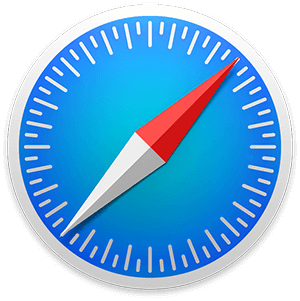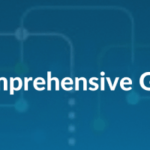
Migrating to Qlik SaaS
In the fast-paced world of data analytics, organizations are investing in transformation initiatives to stay competitive. In the world of Qlik, migrating to Qlik SaaS or Qlik Cloud is almost inevitable, assuming urgency and strategic value for most data-driven companies.
Migrating to the cloud has no doubt delivers several advantages including enhanced data visualization, improved collaboration, ubiquitous insights and scalability. While it eliminates the need to deal with complexities involving infrastructure and maintenance, any migration is always laced with legacy challenges and witness to blind spots that are hard to predict at the beginning.
This article covers practical insights based on technical challenges faced in Qlik Sense to Qlik SaaS migration and how can analytics teams overcome them, and harness better returns while moving to the cloud.
Common technical challenges
1. Migrating Large Qlik Applications to SaaS Environment
When migrating Qlik applications from the Enterprise server to the cloud SaaS (Software-as-a-Service) environment, you may encounter failures for applications with a RAM footprint larger than 5GB. This problem typically arises during data refresh, importing, and opening of the app.
Resolution: Applications with a RAM footprint below 5GB can be accommodated in the SaaS environment without issues. However, for larger applications, it is necessary to re-engineer the application to reduce its size. Here are some ways to achieve size reduction:
Remove unused fields in the application
Convert keys and other relevant fields to integers
Validate and fix data granularity
Optimize unnecessary concatenations
Review frequently used “apply map” functions in larger apps
Optimize any unnecessary transformations that increase reload memory and app size, including set expression changes
2. Managing App Size within the SaaS Environment
When building applications from scratch in the SaaS environment, it’s crucial to prevent them from growing too large in size.
Resolution: To maintain the app size within the SaaS environment, consider implementing the following:
Utilize multiple transformation layers to handle larger data sources and create a final data model with optimal QVD (Qlik Data file) size
Set a data load range restriction, such as loading only the latest one or two years of data in the growing data models
3. Limitations in Data Refresh Frequency and Task Scheduling
In the SaaS environment, there are restrictions on data refresh frequency and task scheduling.
Resolution: The minimum data refresh frequency for an application in the SaaS environment is one hour. It is not possible to refresh an application every 59 minutes or less. Additionally, there are limitations on task chaining and setting multiple triggers.
To work around these limitations, you can leverage the Qlik-cli feature and Windows task scheduling. Qlik-cli operates through REST API calls and requires a server to execute the scheduled tasks efficiently.
4. Increased Data Refresh Time in the SaaS Environment
When migrating applications from the Enterprise Server to the SaaS environment, you may observe longer data refresh times in the SaaS environment compared to the previous setup.
Resolution: The slowdown in data refresh can be attributed to the relatively slower QVD read/write performance in the SaaS environment due to encryption and decryption processes. Although using S3 buckets can provide some relief, it still won’t match the speed of client-managed Qlik Sense.
5. Date and Time Stamp Differences
Qlik Sense in the SaaS environment operates based on GMT (Greenwich Mean Time), while Qlik Sense installations typically use the local server time zone.
Resolution: To resolve date and time stamp issues, schedule tasks and alerts based on the local time machine. Ensure that user profiles reflect the local time zone, and use convert time zone functions to control time-related functions like today(), reloadtime(), etc.
6. First Time User Login using SSO
In the SaaS environment, user attributes are needed to be incorporated within Qlik by getting the user to log in at least once.
Resolution: Inform users about the process and ask them to log in once, allowing time for granting space permissions. Update the section access scripts and account for the additional time required for the first login.
7. NPrinting and Geo Analytics Limitations in SaaS
NPrinting and Geo Analytics features are not available in the SaaS environment.
Resolution: As of now, NPrinting and Geo Analytics functionalities are not supported in the SaaS environment. Explore alternative solutions or consider whether these features are critical for your specific use case.
8. Folder Connections in Data Sources
Unlike the Enterprise server, folder connections in data sources are not available in the cloud editions.
Resolution: Although folder connections are not directly supported, you can utilize “Data files” within all spaces in the SaaS environment. By aligning QVD names based on the app structure, you can simplify maintenance and access files effectively.
9. Managed Spaces and Duplicate App Export
In the SaaS environment, “Managed Spaces” are equivalent to streams in the Enterprise server. However, duplicating applications or exporting apps is not possible within managed spaces.
Resolution: Avoid deleting the developed app that is published to a managed space. Instead, make changes and republish the app as needed. In case of accidental deletion, retrieve the live managed space app using Qlik-cli and continue working on it.
10. Limited Widget Support and Mashup Functionality
SaaS does not provide full support for third-party extensions or direct mashup capabilities compared to the Enterprise server.
Resolution: If you encounter compatibility issues with third-party extensions, consider redeveloping them as new extensions compatible with Qlik Cloud. For mashup functionality, develop and deploy using APIs on a separate machine.
11. Data Type Interpretation Differences
When connecting to MS SQL databases, differences in data interpretation may arise between on-prem server setups and SaaS environments.
Resolution: Verify the data type for all fields and make necessary changes where required to ensure consistent interpretation between on-prem and SaaS environments.
12. Object Out of Memory or Calculation Timeout Errors
In the SaaS environment, you may experience memory errors or calculation timeouts, especially with table objects compared to the Enterprise server.
Resolution: Rework on objects to minimize complex conditions and include only direct dimensions and simple aggregations with set analysis. Avoid using “If” conditions whenever possible. If the problem persists, display data based on field selections and restrict the amount of data shown at a given time.
Preparing for these common challenges allows for a more seamless migration journey, where benefits outweigh risks. GainInsights, a data analytics firm specializing in areas of Business Intelligence Modernization, Data Platform Engineering and No-Code Solutions has helped data-driven companies accelerate migration from legacy to modern cloud platforms and drive success in digital transformation initiatives
1-week Migration Assessment
If you are evaluating migration to Qlik Sense SaaS and are looking for a seamless
transition, explore a 1-week value assessment and approach workshop with us.
Contact us or reach out to info@gain-insights.com for more.















